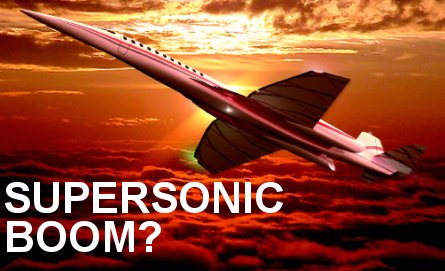
Those prospective partners face a difficult choice between two teams pursuing fundamentally different approaches to achieving affordable supersonic travel. Aerion, a three-year-old Nevada-based company supported by US billionaire Robert Bass, is developing a Mach 1.6-capable aircraft that will avoid sonic booms by dropping to transonic speed over land. SAI's Quiet Supersonic Transport (QSST), on the other hand, is a technologically more ambitious low-boom aircraft that could cruise supersonically overland.Aerion, which is already teamed with Pratt & Whitney on the powerplant, has a wealth of industry experience in its ranks, ranging from vice-president Brian Barents, former president of Galaxy Aerospace and Learjet, to chief operating officer Michael Henderson, the former Boeing High-Speed Civil Transport program manager. "It is extremely important to get the right players on board," says Henderson, adding: "It is ever the case, particularly where there is significant perceived technical risk - even if, as we believe, the actual risks are a lot lower than most people think."
SAI was established by Michael Paulson in 2001 funded by money bequeathed by his father, the late Gulfstream founder Allen Paulson, and is using the design know-how of Lockheed Martin's Skunk Works to perfect the QSST configuration. "We're really working heavily on establishing partnerships," says Paulson, who adds: "We have signed a letter of intent with one aerospace company already, and we're looking at signing another soon."
The success or failure of both projects almost certainly rests on the strengths of the industrial teams formed over the next year or so.
Both most also run the gauntlet of credibility. The big OEMs continue, publicly at least, to remain highly skeptical over the SSBJ market, while the supersonic flight overland remains illegal in the USA. Gulfstream president Brian Moss says: "If the rule changes then it would make sense to develop an aircraft." Gulfstream is, however, trying to influence the powers-that-be by touring a supersonic acoustic signature simulator that is used to give technical and regulatory officials a taste - or sound - of what a boom optimized airframe could sound like next to Concorde. So far no-one has said the optimized version won't work, although some have reservations.
Restriction
Gulfstream's view is partially echoed by other OEMs. Cessna president Jack Pelton says: "We still feel they have some very large regulatory impediments into the market. In the USA it is illegal to fly supersonically overland, and I don't see any of our political figures taking on that crusade. That puts a dampener on what the total market could be."
In Europe, Dassault continues to lead an EC-funded research effort that is focused on enabling technologies, rather than either a finalized design or a policy changing regulatory strategy. As leaders of the HiSAC (high-speed supersonic aircraft) project, Dassault's view is long term, as shown by its call to engine makers to come up with the $1 billion effort needed to develop a suitable supersonic powerplant.
Aerion completed Phase 1 studies in September and is "literally going around the world" to talk to potential partners in the run-up to the forthcoming launch of Phase 2, which will see formation of the industrial team, freezing of the lines of the SSBJ and the start of preliminary design. SAI began its Phase 2 effort in January, expecting it to run for around two years. Phase 3 will cover detailed design and first flight in 2010-11, with certification and entry into service planned for 2012-13. The 130ft (40m)-long QSST will have a span of 65-68ft, seat between eight and 12 people in an executive configuration, or up to 18 in a high-density arrangement, and be capable of ranges of up to 4,300nm (7,950km) with instrument flight rules reserves using a typical NBAA flight profile, says Paulson. "The data shows we have an abundance of performance, and the power to go right to altitude and supersonic cruise."
SAI, which has doubled its funding allocation for Phase 2 to $50 million, is also using the second phase to "engage with regulators in the USA and overseas, and we are really working on the aircraft as far as the propulsion system is concerned", says Paulson. General Electric, P&W and Rolls-Royce have all been asked to submit proposals and "we're getting good news from the manufacturers.
Propulsion
"All three have new engine concepts that are fuel efficient and we expect to downselect to one towards the end of Phase 2 - so that will probably be around late 2006 or early 2007 - and possibly even sooner the way the data is going," Paulson says. Boom reduction is achieved through airframe shaping and a "tail-braced wing", with an inverted-V tail supporting the underslung, aft-positioned engines and stiffening the swept, gulled wing.
Aerion's dramatically different design, which relies on the concept of supersonic natural laminar flow pioneered by Aerion chief technology officer Richard Tracy, is based around an unswept, tapered wing with a sharp leading edge and a thin, bi-convex aerofoil section.
GUY NORRIS
Source: Flight Daily News
















